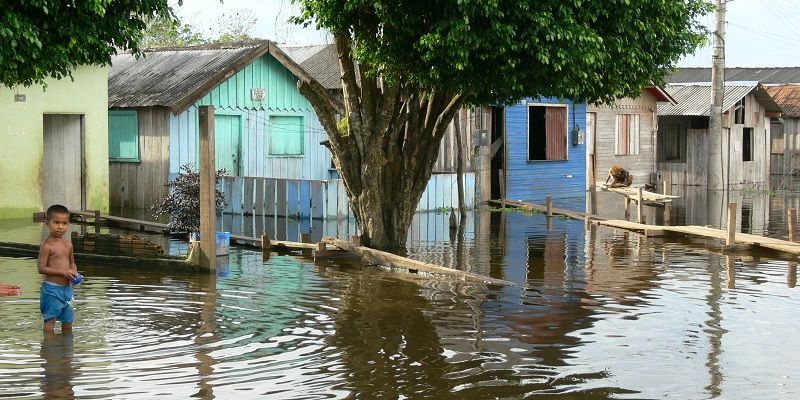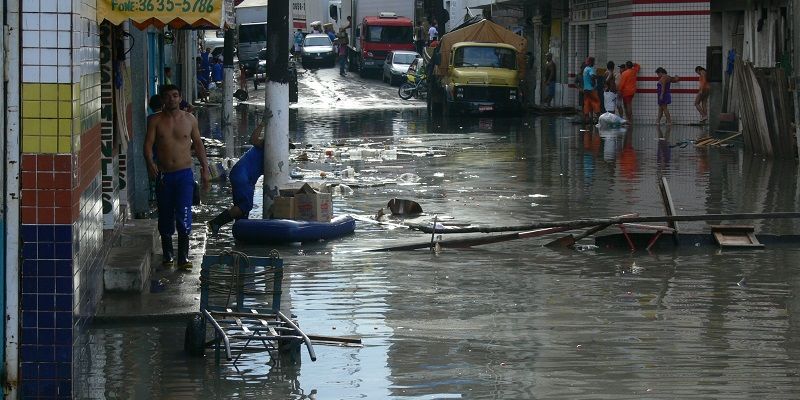
A recent study of more than 100 years of river level records from the Amazon shows a significant increase in frequency and severity of floods.
Scientists’ analysis of the potential causes could contribute to more accurate flood prediction for the Amazon Basin.
Water levels of the Amazon River have been recorded daily in Port of Manaus, Brazil, since the beginning of the last century. Researchers used 113 years of water level records and found extreme floods and droughts have become more frequent over the last two to three decades.
Their findings show that in the first part of the 20th century, severe floods with water levels exceeding 29 metres – the benchmark for a state of emergency in Manaus – occurred roughly every 20 years. Now, extreme floods occur on average every four years.
Study lead author, Dr Jonathan Barichivich, from Universidad Austral de Chile – and a former Research Fellow at the University of Leeds, said: “Increases of severe droughts in the Amazon have received a lot of attention from researchers. However, what really stands out from this long-term river record is the increase in the frequency and severity of the floods. With a few minor exceptions, there have been extreme floods in the Amazon basin every year from 2009 to 2015.”
“This dramatic increase in floods is caused by changes in the surrounding seas, particularly the Pacific and Atlantic oceans, and how they interact.”
According to the study, the increased flooding is linked to a strengthening of the Walker circulation – an ocean-powered system of air circulation caused by differences in temperature and pressure over the tropical oceans. This system influences weather patterns and rainfall across the tropics and beyond.
Co-author Professor Manuel Gloor, from Leeds' School of Geography, said: “This dramatic increase in floods is caused by changes in the surrounding seas, particularly the Pacific and Atlantic oceans and how they interact. Due to a strong warming of the Atlantic Ocean and cooling of the Pacific over the same period, we see changes in the so-called Walker circulation, which affects Amazon precipitation.
“The effect is more or less the opposite of what happens during an El Niño event. Instead of causing drought, it results in more convection and heavy rainfall in the central and northern parts of the Amazon basin.”
The ultimate underlying cause for the warming of the Atlantic is not entirely clear. But in addition to natural variability, global warming is at least partially responsible but in an unexpected and indirect way, according to the study.
As a result of greenhouse warming, wind belts in mid to high latitudes in the Southern hemisphere have shifted further south, opening a window for transport of warm Indian ocean waters around the tip of Africa, via the Agulhas current, towards the tropical Atlantic.
The changes to the Amazon Basin’s water cycle have had severe consequences for people and livelihoods in Brazil, Peru, and other Amazonian nations.
 Flooded area in the centre of Manaus, 2009. Credit: Jochen Schöngart
Flooded area in the centre of Manaus, 2009. Credit: Jochen Schöngart
Co-author Dr Jochen Schöngart from the National Institute for Amazon Research in Manaus, has experienced Amazon River floods first-hand. He explained that these extreme flooding events last for many weeks and have disastrous consequences. Flooding can contaminate water supply and spread disease, as well as destroy homes and livelihoods. Economic activities in the floodplains such as agriculture a cattle ranching are strongly affected.
The research indicates that these floods are not over yet. The year 2017, which was not included in the study, again saw water levels rise to over 29 metres. As the tropical Atlantic is expected to continue warming faster than the tropical Pacific over the next few decades, scientists expect more of these high water levels.
The findings of this study could help predict the probability of flooding extremes in the Amazon in advance and help mitigate the impacts for urban and rural Amazonian populations.
Further information:
Top image: Flooded suburb of the city of Itacoatiara (Central Amazon region) in 2009 Credit: Jochen Schöngart, National Institute for Amazon Research
The paper Recent intensification of Amazon flooding extremes driven by strengthened Walker circulation was published in Science Advances on 19 September 2018
For more information, contact press officer Anna Harrison at the University of Leeds a.harrison@leeds.ac.uk or +44(0)113 343 4031.